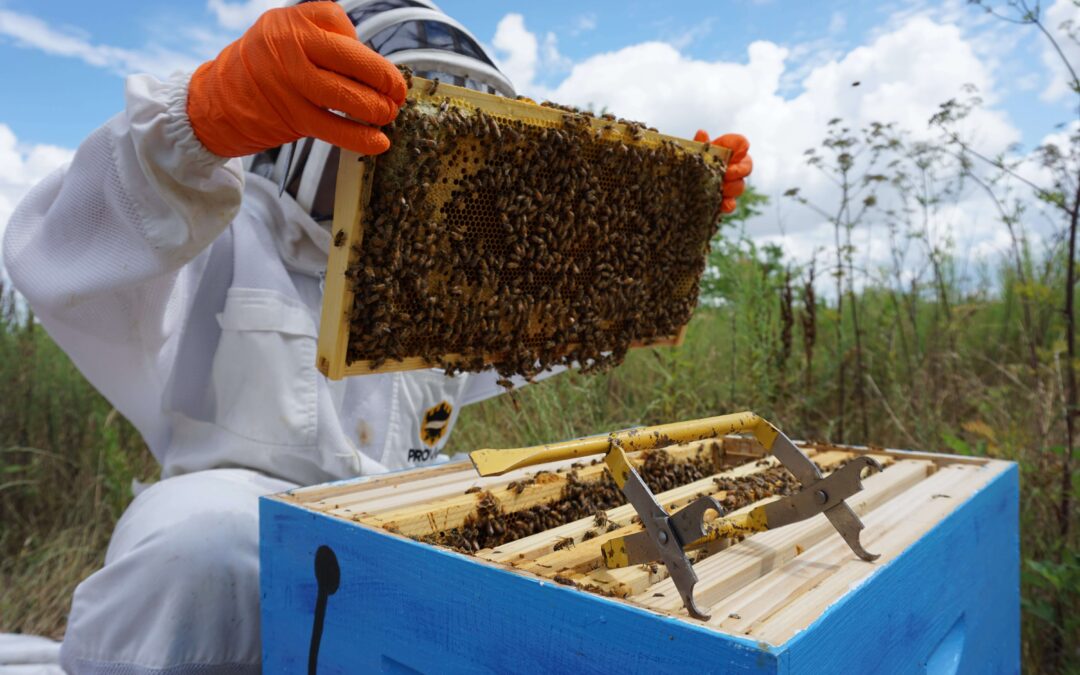Landscaping is about more than creating beautiful vistas, lush lawns and sports fields that can survive a Pop Warner scrimmage. Every professional landscaper has a deep respect for nature, and feels a strong commitment to preserving fragile ecosystems.
Many of us first became interested in the craft because of our love of the outdoors. Our dream job was never a sedentary day spent in a cork-walled cubicle, staring at screens and clicking on keyboards. We enjoy the active life, and celebrate nature.
That is why we employ the tools of our trade with precision and care. Pesticides are a prime example. There are many situations in which application of chemicals to foliage is the only way to eradicate harmful insects. Before we make that decision, we explore all available options, and take care to ensure we are not using pesticides to excess.
We are also attuned to the ecological warning signs we see all around us. For example, North American honeybees have struggled against a range of environmental obstacles. Dwindling populations, abandoned colonies and vast acres of plants left unpollinated have been signals that bees are in distress.
There have been many theories about what is causing the worldwide decline of bee populations. Destruction of habitat, invasive parasites and climate change are some of the factors commonly cited — as well as chemical pesticides.
Some recent studies are illustrating the scope of the problem. In one, a widely-used class of pesticides developed by Bayer CropScience was found to be disrupting bees’ innate navigational sense, as well as the work patterns of drones. One survey of honeybee colonies in North America found that hives were contaminated to varying degrees by 121 different pesticides.
The particular class of pesticides implicated in the so-called “colony collapse disorder” are known as neonicotinoids, chemically similar to nicotine. Their use has become so prevalent that commercial seeds are often coated with the pesticide before planting.
According to a report in Wired magazine: “Like earlier pesticides, neonicotinoids disrupt insects’ central nervous systems. But unlike earlier pesticides, which affected insects during and immediately after spraying, neonicotinoids spread through the vascular tissues of plants. They’re toxic through entire growing seasons, including flowering times when bees consume their pollen.”
In December, researchers from the University of Illinois Urbana-Champaign and Ohio State University published a study that found some pesticides can interfere with bees’ sense of smell, which scrambles their ability to communicate social signals to other members of the hive.
A colony’s communication network is highly complex. As we all learned in elementary school, hives are rigidly hierarchical societies, with a queen ruling over worker bees who provide her with sustenance and prepare the way for the next generation. Chemicals are the social media platform of choice.
“For example, nurse bees — that are responsible for taking care of larvae that ultimately become queens and worker bees — constantly monitor the larvae using pheromones,” reads a summary prepared by the Carl R. Woese Institute for Genomic Biology. “The larvae emit brood pheromones to indicate that they need food. There are also alarm pheromones that workers produce to warn the other bees of danger. If these cues are dampened or not perceived properly, the colony may fail to thrive.”
The specific products tested in the study were the adjuvant Dyne-Amic, the fungicide Tilt and the insecticide Altacor. The results were a wake-up call for every conscientious professional who uses pesticides. The message has gotten through, and we will do our part to preserve this irreplaceable piece of nature’s inheritance.
